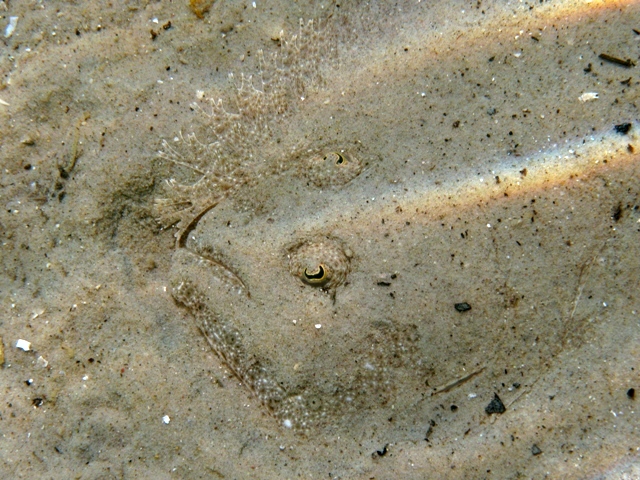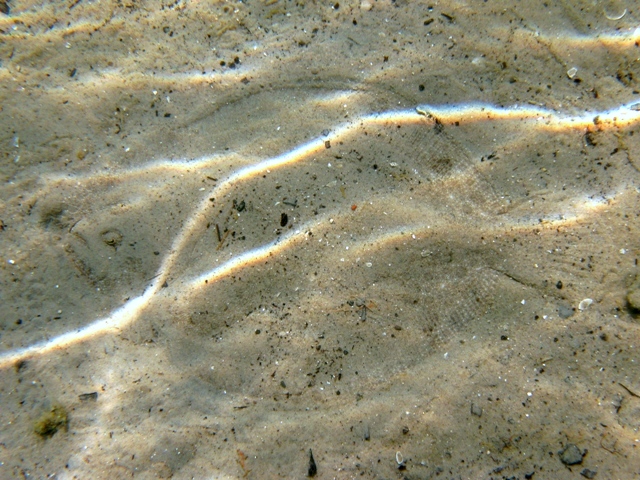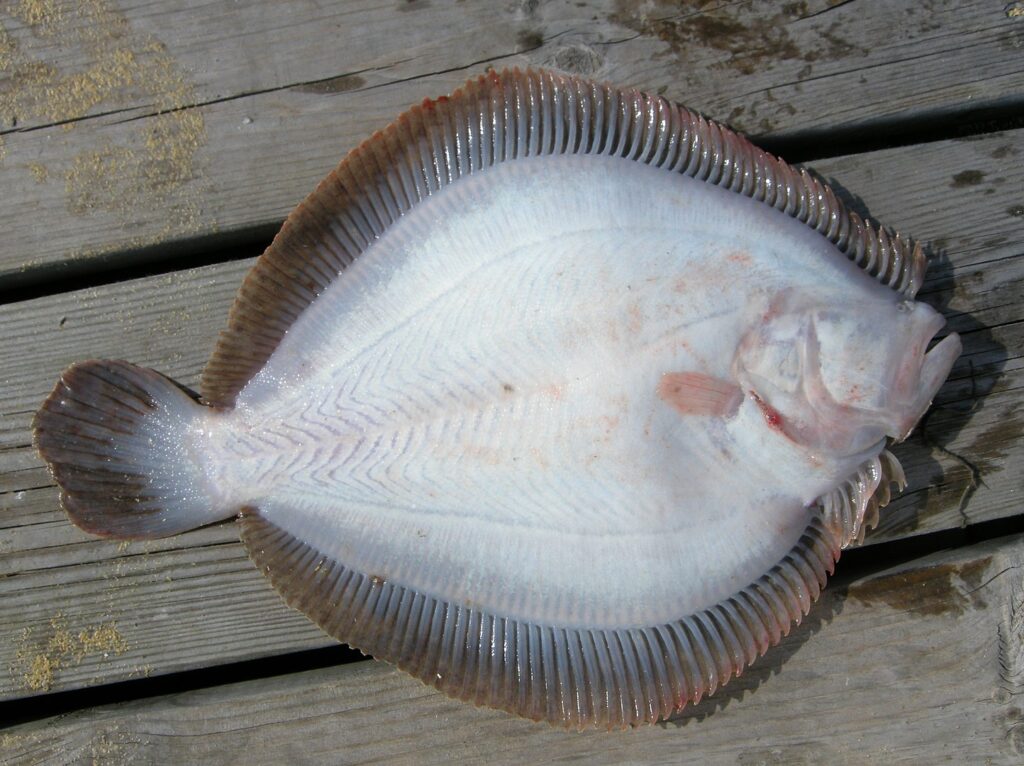Brill
Scophthalmus rhombus

Voracious!
The brill looks a lot like its closest relative, the turbot. The easiest way to tell them apart is to look at their top sides: the brill is smooth but the turbot has bony protrusions on the skin. With its large mouth, the brill is a voracious predator. As an adult, it mostly eats fish such as sand lance, gobies, and herring.

Photo: Roberto-Pillon-CC-BY
The eye moves to the other side
When a brill fry hatches it looks like a “normal” fish – with one eye on each side of its head. But when it has grown to about 3.5 cm in length, a transformation occurs. The right eye “migrates” across to the left side, and the body turns so that its right side becomes its underside.
After the transformation, the brill lives on the sea floor. The side of the brill facing away from the sea floor looks like sand, providing camouflage. All flatfish experience this kind of transformation.

Photo: Roberto-Pillon-CC-BY
The eggs and fry are left on their own
The spring and summer make up the brill’s spawning period. A female can release around 850,000 eggs, which are left floating in the water. The parents do not look after the eggs but leave them on their own. A newly hatched brill fry is only 4 mm long and lives in open water until it transforms into a flatfish and moves to the sea floor.

Photo: Arnstein-Rønning-CC-BY-SA
Distribution in Sweden

The West Coast, sometimes down to Öresund.
White marking = Distribution
Threat based on the Red List

Trade regulations
CITES: Not listed.